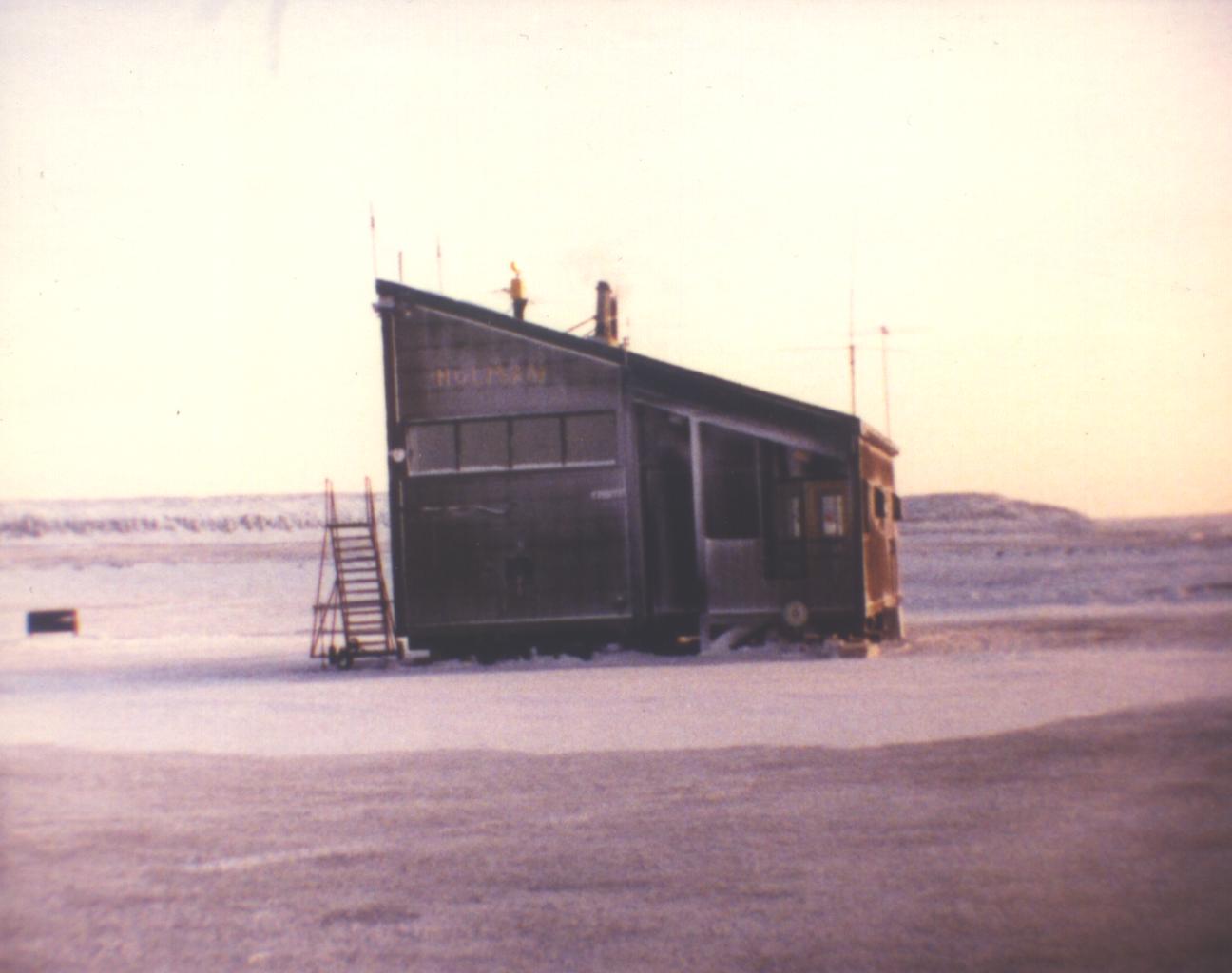- Ulukhaktok/Holman Airport
Infobox Airport
name = Ulukhakot/Holman Airport

IATA = YHI
ICAO = CYHI
type = Public
owner =
operator = Government of Northwest Territories
city-served =
location =Ulukhaktok, Northwest Territories
elevation-f = 117
elevation-m = 36
coordinates = coord|70|45|46|N|117|48|22|W|type:airport|display=inline
website =
r1-number = 06T/24T
r1-length-f = 4,300
r1-length-m = 1,311
r1-surface =Gravel
stat-year = 2007
stat1-header = Aircraft Movements
stat1-data = 838
footnotes = Source:Canada Flight Supplement CFS]
Movements fromStatistics Canada . [http://www.tc.gc.ca/pol/en/Report/tp577/vol2/51-210-XIE2008001.pdf Aircraft Movement Statistics: Airports Without Air Traffic Control Towers (TP 577)] ]Ulukhakot/Holman Airport, located at Ulukhaktok,
Northwest Territories ,Canada Airport codes|YHI|CYHI was fully opened in December 1978 with the start of the Community Aerodrome Radio Station (CARS). However,aircraft had been using therunway prior to that as construction was completed in the summer of 1978.Construction of the runway and associated facilities had begun in 1976 by Fred H. Ross & Associates (now Kitnuna Corporation) of Cambridge Bay,
Nunavut . Theairport is convert|2|NM|abbr=on|lk=in north of the town and a road was built to allow access from the community, which also included a short bridge to span the Okpilik River.Early years
Prior to the construction of the airport all aircraft either landed on an
ice strip in the winter or in the middle of town. The old runway ran from the shore of "Jacks Bay" to the centre of the community. Besides limiting the size of the aircraft,Douglas DC-3 orDe Havilland Canada Dash 7 , able to land it also was a potentially dangerous situation. The only advantages were the fact that freight could be unloaded very easily and MEDIVAC aircraft could park right outside the nursing station. In the late winter, early spring abulldozer would be used to create a runway on the ice that could be used by larger aircraft such as theC-130 Hercules .General
The original buildings at the airport included a two-story
airport terminal , an emergency power generator building and the aircraft refueling station. The terminal has since been replaced and a three-bay garage to house the maintenance vehicles has been added. At the time of construction thenon-directional beacon (NDB) and control building were left just south of the community. The NDB was later moved (approximately 1981) to its present location at the airport. At the same time the control building was relocated to the airport.The runway is the standard gravel strip that is seen in most Canadian
Arctic communities and is convert|4300|by|100|ft|abbr=on|0 with the centre convert|117|ft|abbr=on|0 above sea leavel (ASL). Due to a slight hump in the land it is not possible to see one end of the runway from the other. Thetaxiway was originally convert|50|ft|abbr=on wide, however this had to be widened, to convert|75|ft|abbr=on later to accommodate the four-engined Lockheed Electra.Lighting consists of:
* Runway identification lights of the uni-directional flashing strobe type
* Red/green threshold/runway end lights
* Medium intensity (three settings) runway edge lights
*Precision Approach Path Indicator (PAPI) lights, type P1 for aircraft with eye to wheel height of up to convert|10|ft|abbr=onThere is also a Type K ARCAL (Aircraft Radio Control of Aerodrome Lighting) system. However, the PAPI are not available with this system and can only be operated manually by a person at the airport.
Currently the only fuel available is
turbine kerosene (Type JET A) and it is provided by a local contractor.METAR weather services are provided on a limited basis locally and a call out can be arranged for weather at other times. The radio station operates the same hours as the weather service and is in fact the same person. They use the standard CARS mandatory frequency of 122.1 MHz and they also monitor the emergency frequency of 121.5 MHz. The CARS also monitor the NDB which broadcasts themorse code identification "HI" on 361 kHz.Problems
During the initial planning stages community consultation was held and a major concern was expressed over the runway headings. The new runway was to be almost 90° from the old runway and some people felt that the prevailing
wind s would cause flights to be cancelled due to highcrosswind s. However, this was not too much of a problem as the hills around the community funnelled the winds almost directly down the runway.When the airport was originally constructed there was no provision for dedicated maintenance vehicles and they had to be shared with the community. This meant that after a
blizzard the bulldozer andgrader had just enough time to clear the road and runway before they had to return to town. This left the runway with convert|6|ft|abbr=on high snow banks on either side, which caused the runway to fill in quickly with snow due to the almost constant winds that blow in the arctic. This then resulted in a high cost snow removal operation. The maintenance equipment would be run for almost 24 hours as a team of operators would push the snow back from the runway. After a few years asnow blower and plow-truck were purchased and a garage built to house them.Trivia
Gravel for the runway was obtained from the north bank of the Okpilik River and the area was left untouched. This became known as the "sand-pit" and is used frequently in the summer months as a
race track for 2, 3 and 4 wheelmotorcycle s.Due to the situation of the airport, the community and the surrounding hills there is a "wind line" about half way to the airport. The funnelling effect of the hills may cause the airport to be in a blizzard while the community is enjoying clear weather or vice-versa.
By early 1979 the snow problem was so great that the runway was no longer a straight line. There was a slight curve in it that was quickly removed after an aircraft caught its wing on the snow bank that resulted in Holman Airport's first accident (no injuries).
Airlines and destinations
*
First Air (Kugluktuk, Yellowknife) [ [http://www.firstair.ca/weather/index.html First Air interactive weather/route map] ]References
External links
Wikimedia Foundation. 2010.
